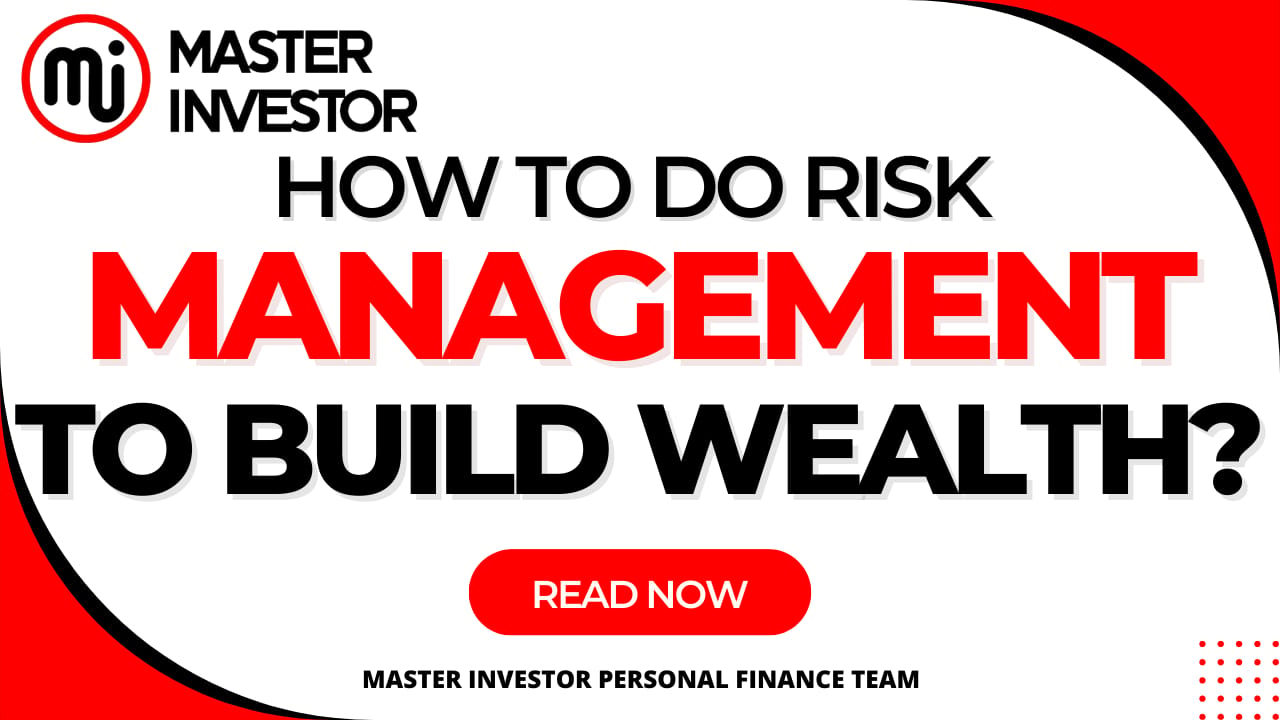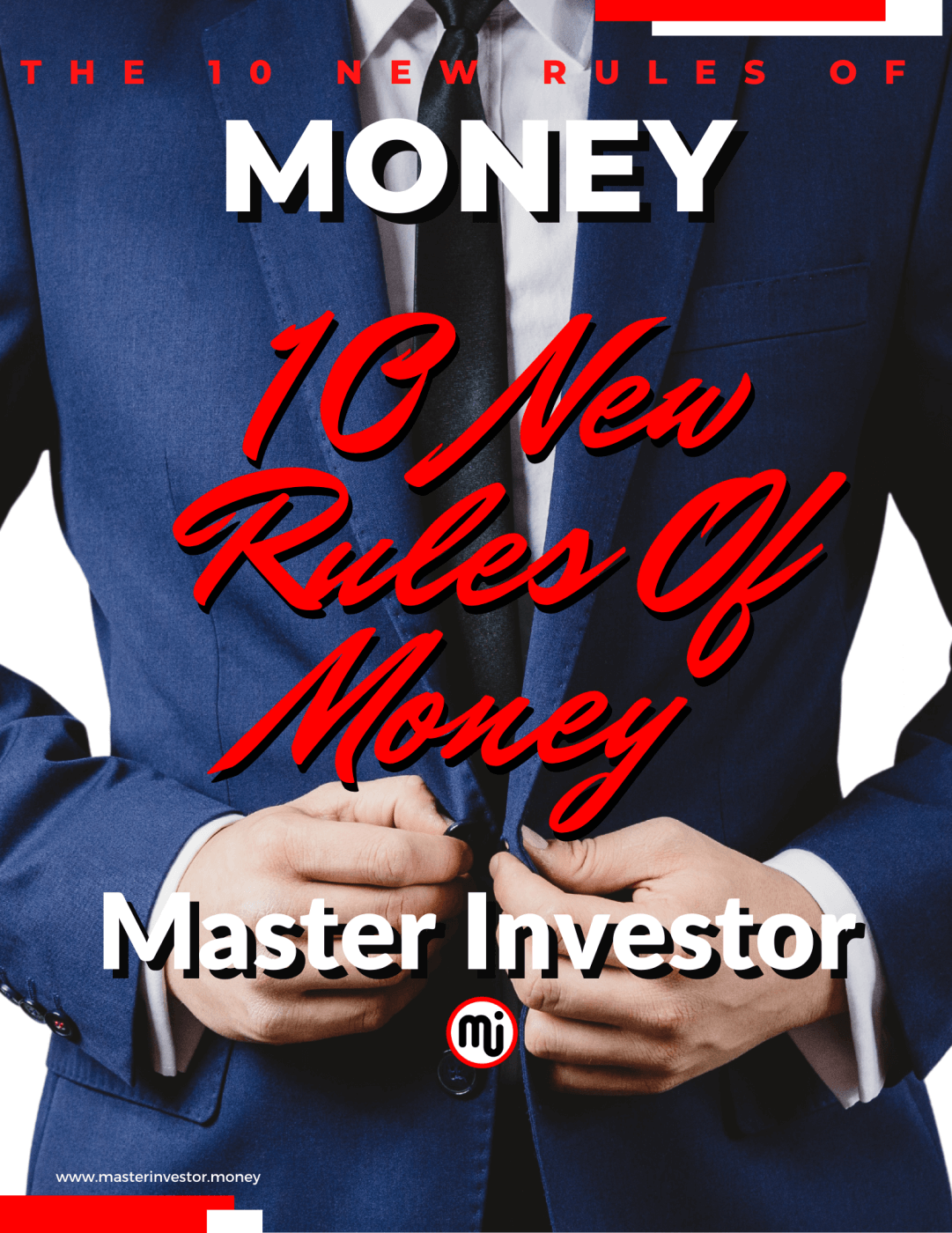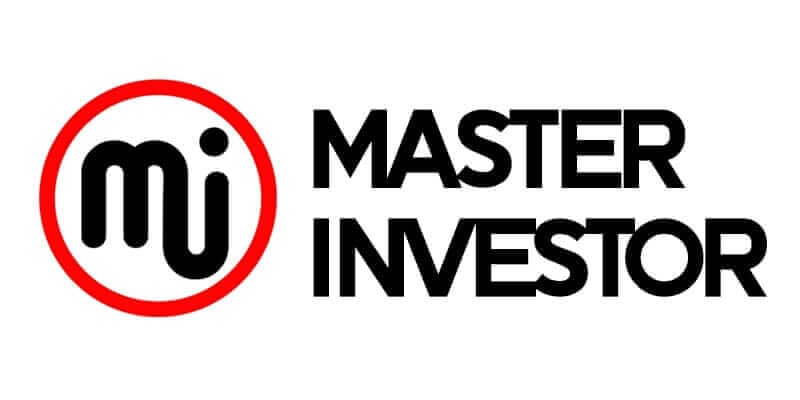
Being "conservative" might lead to failure when it comes to investing
Knowing which risks to take and which to avoid is a sign of financial intelligence. How to do risk management to build wealth?
Investors frequently ponder this question: "What level of risk am I comfortable with?"
Risk associated with investments and financial intelligence are related.
Risk aversion reduces one's chances of becoming a successful investment.
The secret to success is taking calculated risks rather than being reckless.
When financial uneducated people are disccussing investments with financial planners or stockbrokers, they'll always ask us about our risk tolerance, or whether we are cautious or aggressive. Sadly, they aren't even aware that they should not be asking that.
Risk management and financial acumen are related
Many people describe themselves as "conservative" when evaluating investment prospects while talking about investments. In truth, this term is frequently mistaken for "uneducated."
Which means that the query that financial advisers ought to be posing is, "Are we educated or uneducated when it comes to our investments?"
The risk management justification of being "conservative" can simply be interpreted as "A person being financially uneducated, scared, don't know what to do, and don't want to take the time to learn."
Consider this: financial advisors will immediately recognize that a person's lack investment knowledge if a person tells them that he or she is a cautious investor. It's a dead giveaway that enables those with questionable morals to take advantage of her or his frailty and buy anything they want the uneducated investors to buy. Sadly, financial advisers receive money from thousands of uninformed "investors" each year. Who is to say, though, that they truly have the uneducated investor's interests at heart?
Of course, if we are dealing with a real human financial advisor, that's merely something to take into account. The total assets under robo management, which means a computer uses automated algorithms rather of a living, breathing human who claims to be an expert in this sector, increased by 15% to $257 billion in 2018. The amount has surpassed $1 trillion as of this year. The world of financial advisors is fast changing due to technology, and not always for the better. But we adapt and take advantage of technology and AI (artificial intelligence).
The general consensus among financial planners is that "the higher the return, the higher the risk." That's not actually true, though. What is actually true is that risk increases as financial intelligence decreases and risks decreases as financial intelligence increases. To properly learn how to lower investment risk, we must therefore increase our financial intelligence, which is why doing so is so important.

A different method to evaluate investment risk
The assumption that comfort and stability are more valuable than the benefits of investing - because it's dangerous - turns off many people from taking on investment risk.
They believe in error that investing entails risk whereas, in fact, the risk lies with the investor. Think about it: An investment is an investment, whether it be in a company, a piece of real estate, a stock, or a commodity. We, the inside investors, are the ones who decides whether a certain investment is a good or terrible one for us.
If we are wondering how to lower the risk of our investments, start by realizing that not all of them will turn out well because no investor has a 100% record of identifying winners. On the other hand, our chances of lowering investment risk improve as our expertise increases.
Additionally, if we have done our research, we will be aware of the reasons for each investment we make as well as the outcomes of those investments. We lose control if we just give our money to a financial advisor to invest; and when we lose control, our risk factor increases noticeably.
Here is another angle to look at this theory from: Is it dangerous for an experienced driver to operate a car at 25 mph? Most likely not. If we use the same vehicle driven at the same speed by a drunk driver, that vehicle turns becomes a weapon. The driver is to blame, not the vehicle. The investor, not the investment, is to blame.
The Cash Flow Circle and the risk of investments
As an inside investor and wealthy entrepreneur we want to start our own companies and spend our money into assets rather than save it.
The Cash-Flow Circle, or ESBI, best explains their divergent worldviews regarding the game of money that we all participate in regardless of our awareness of the real game of money.
The ESBI's four players each stand for a particular personality and mentality.
Employee is referred to as E. A worker values benefits, a stable income, and their job. He sells his time to an employer in order to do this. He or she doesn't enjoy taking chances and doesn't know how money works. His conventional education equips him or her to be a valuable employee.
S stands for Self-Employed. Ss value their autonomy. They works for themselves and does not report to anyone. They are not employed. Instead, they fill the role. An S has an issue since he or she cannot take vacations. If they does, they will no longer be paid.They lack systems to automate their operation, so they own a job.
Business Owner is abbreviated as B. A large company owner is unemployed. We thrive from passive income and capital gains income. We actually own a system of systems. Our way of thinking is, "How can I employ others to generate income for me in the system I've built?" We can stop working and still make money, therefore we have financial independence.
Inside Investor is the initials I on the right side of the Cash-Flow Circle. An inside investor knows that money can be invested to increase wealth. We are skilled at making money passively through actively investing in assets by utilizing debt (good debt), taxes, insurance, and other factors. We view the world as being full of possibilities and resources.
Investment risk on the Cash-Flow Circle right and left sides
The ESBI is split into two halves as we can see. On the left side are E and S, while on the right side of the Cash-Flow Circle are B and I.
People on the left are frequently uninformed when it comes to money, business, and investing, and they are also risk averse. But the thing that makes business and investment look perilous is their lack of education.
Those on the right side comprehend how finances and investing function, and they have very different perspectives on the world. Because you lack three things—training, control, and knowledge—they contend that working for someone else or working for yourself is actually much riskier than owning a large company or making investments.
The poor mindset who resides on the left side of the Cash-Flow Circle. The wealthy mindset lives on the right side of the Cash-Flow Circle. The poor mindset struggles financially who always laments their financial situation. The wealthy mindset amassed more money every year, and over time, much like in Monopoly, we exchange our residential real estate for commercial real estate hotels.
Defining risk differently
When it comes to risk, Warren Buffett says, "Risk is not knowing what you are doing." Once more, "you," not the investment, is the crucial word here.
Consider risk as follows:
Reckless
Investing
Sans
Knowledge
Take a look at these two guidelines for buying stocks:
Don't invest in a firm if we don't know how it produces money.
If something appears to be too good to be true, it probably is.
There are steps we can take to lower investment risk and improve our chances of success, but as we have discovered, there are no investments in the world of investing that are 100% guaranteed to be safe (free from losses):
Improve your financial literacy.
Spend some of your money actually investing to gain practical experience.
Recognize the cost of the investment and its return.
Control your investing portfolio.
Become a self-employed financial advisor.
In terms of investment, we all make mistakes. Additionally, the majority of individuals are preoccupied with other activities and dislike dealing with intricate financial matters. Participating in a company's 401K or giving money to someone else to invest is considerably simpler but not sound investing.
Prevent these 3 investment pitfalls.
Discovered the three main reasons why poor people truly believed investing was risky - and why investment risk was a reality for all - after spending a lifetime researching the lives of both wealthy and poor people.
I am reading: How to do risk management to build wealth?
Investment risk No. 1: Training Deficit
Visit our page to learn more about the three different sorts of education: professional, financial, and academic.
Most people attend school to receive academic and professional training that will help them become employed or self-employed. Reading, writing, and math are all skills that are taught in school and are beneficial for the working world. It teaches us how to carry out our superiors' instructions and show up where we are supposed to be at the appropriate time—the mindset of an employee.
Some people continue their schooling and pursue careers in high-paying fields like medicine, law, or accounting. But in the end, they are essentially well compensated employees or independent contractors. Few individuals who prioritize academic or professional development cross over to the right side of the Cash-Flow Circle from the left.
Unfortunately, neither how money works nor how to make it work for us are taught in traditional school. We won't learn the abilities required to run a business or be an investor from it. We must look for and learn those abilities on our own, beginning with the four pillars of financial literacy.
As a result, the majority of people just lack the education required to understand how to reduce investing risk. Additionally, investing is dangerous without information and skills.
Fortunately, Master Investor is here to support us in improving our financial savvy with our books, games, workshops, and coaching.
Investment risk No. 2: Lack of Control
It's likely that many people developed the notion that investing was risky during the previous Great Recession as they observed the decline of their stock holdings. Most recently, the global coronavirus pandemic is estimated to have killed a large number of individuals.
In actuality, the majority of people lack a solid investment strategy.
Instead, they put in a lot of effort and give their money to a financial "expert" who invests it in bonds, stocks, and mutual funds. The issue is that the risk associated with these investments is higher. You are powerless. The management and markets have the upper hand. Which is
Instead, they put in a lot of effort and give their money to a financial "expert" who invests it in bonds, stocks, and mutual funds. The issue is that the risk associated with these investments is higher. The traders are powerless. The management and markets have the upper hand. That is a risky posture.
On the other side, successful investors aim for as much control as we can in order to reduce investment risk. In fact, we've published an an article on the 10 essential investor controls a master investor need to have.
Due to the ability to lock in cash-flow over a long period of time, real estate is an excellent investment choice. We should invest in companies where we have the ability to make decisions. Both situations provide the investor considerable power over the outcome of the investment.
Investment risk No. 3: Ignorance
The majority of us are aware intuitively that being on the inside is necessary if we want the genuine deal. A common statement is "I have a friend in the business." No matter what kind of business it is. It can be to purchase a car, theater tickets, or a new outfit. We are all aware that business deals are done "on the inside".
The world of investing is similar. If we are not on the inside, we are in the outside.
Employees and independent contractors typically make investments from outside, where the danger of doing so is greater. They know very little about the actual investments they are making.
Business owners and inside investors have in-depth knowledge of what transpires within their companies or their assets. They are the ones who make the business or investment go, and because they have insider information, their investment risk is significantly reduced.
How can you reduce the risk of your investments?
To begin reducing our investing risk, deliberately attempt to shift our perspective from the left to the right side of the Cash-Flow Circle.
We can still invest on the left side of the Cash-Flow Circle, but it is not advised.
That is not to imply that a person cannot invest on the left side, but it is much more difficult because there are numerous forces working against the person on the left side of the cash-flow circle. In particular, it is very difficult to exercise any control, even if we have the necessary education and experience. Additionally, because they sell their time, those on the left rarely have the time available to manage their investments the way someone on the right does.
To move to the right side of the cash-flow circle, we must acquire the necessary skills and information and put them to use so that we may exercise control. Through methods like coaching and seminars, we can everyday raise our financial IQ. However, we must ultimately put that information to use. Turning information to knowledge is only possible by putting the data to action in our lives. There is no better way to learn than to attempt, fail, and try again.
It takes financial education and practice to move from a position of risk to a position of security when it comes to investing. Examine our investing position objectively and take the required actions to become knowledgeable, in charge, and trained. One of our best choices is going to be that one.
I am reading: How to do risk management to build wealth?
Start investing in high quality financial education, by reading our financial eBooks:


Lucrative resources and tools:
Follow us on Instagram.
Listen to our Podcast.
Subscribe to our Newsletter.
Follow us on Tiktok.
Purchase a business digital Course.
Like our Facebook Page.
Join our Inner Circle.
I am reading: How to do risk management to build wealth?
Comment, like, share and follow for more High Quality Financial Education Made Simple.

